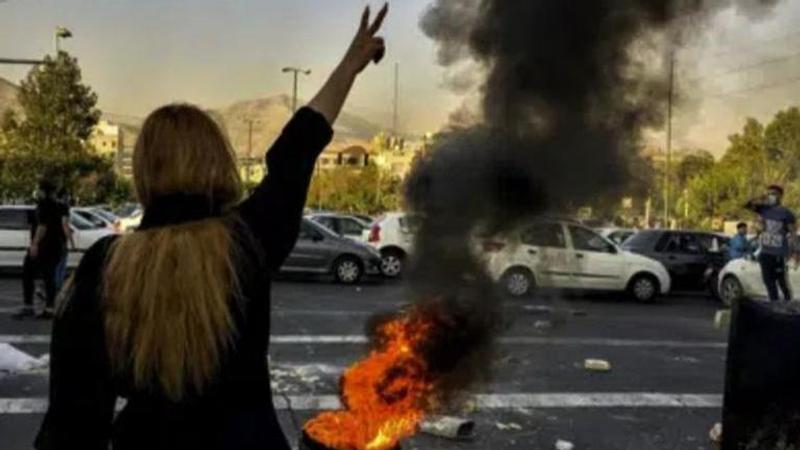Published 20:36 IST, April 8th 2023
Authorities in Iran install surveillance cameras to identify and penalize unveiled woman
Iranian authorities will begin installing surveillance cameras in public areas to identify and penalise women who do not comply with the compulsory dress code.

Starting today, Iranian authorities will begin installing surveillance cameras in public areas to identify and penalize women who do not comply with the compulsory dress code by wearing a veil. Those who violate the dress code will receive "warning text messages as to the consequences," according to a statement by the police cited in the RTE report. The new measure is an attempt to curb the growing number of women who are defying the dress code. The statement further stated that the move is aimed at preventing "resistance against the Hijab law" and that such resistance tarnishes the country's spiritual image and spreads insecurity.
Since the death of a 22-year-old Kurdish woman in the custody of Iran's morality police last September, there has been an increase in the number of Iranian women who are choosing to forgo their veils. The woman, Mahsa Amini, had reportedly been detained for violating the Hijab rule. The security forces have violently suppressed the revolt. Videos of unveiled women resisting the morality police in public places such as shopping malls, restaurants, and streets have proliferated on social media, despite the risk of arrest for defying the compulsory dress code.
Iran and Hijab
In accordance with Iran's Islamic sharia law, women in the country are required to wear loose-fitting clothes and cover their hair to conceal their bodies, with those who breach the rule facing fines, public censure, or even arrest. A statement from the Interior Ministry emphasised the importance of the veil as a "civilizational foundation" and "practical principle" of the Islamic Republic. Additionally, a recent police statement called on business owners to vigilantly monitor adherence to the societal norm, with unveiled women now at risk of being identified and punished through public shaming and warning messages.
The Hijab law in Iran has its roots in the Islamic Revolution of 1979, which brought Ayatollah Ruhollah Khomeini to power and transformed the country from a secular monarchy to an Islamic republic. The revolution was driven by a desire to create a society based on Islamic principles and values, and the Hijab became a symbol of this new order. In the early years of the Islamic Republic, the Hijab was enforced through a morality police force known as the Gasht-e Ershad. Women who violated the dress code were subject to public rebuke, fines, or even arrest.
Why is the Iranian regime so obsessed with imposing Hijab on women?
The Hijab, which refers to the headscarf worn by Muslim women, is seen as a symbol of modesty, piety, and obedience to God's commands. Iranian regime thinks that it promotes respect and honor for women, and protects them from objectification and sexual harassment. Culturally and societally, the Hijab is seen as a means of maintaining the moral fabric of society by protecting women from unwanted male attention, preserving their modesty, and promoting chastity. The Hijab is also seen as a way to distinguish Muslim women from non-Muslim women, and as a symbol of identity and belonging to the Muslim community. The recent protests in Iran are evidence that a significant amount of people in Iranian society no longer agree with this point of view, even if that might have happened a few decades back. Imposition of the Iranian regime's view is leading to conflict in the society.
Updated 20:36 IST, April 8th 2023




